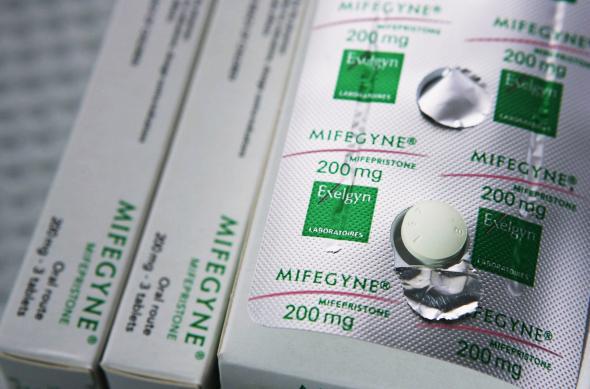Restricting access to legal abortions doesn’t stop women from doing everything in their power to end their pregnancies. Researchers from the Guttmacher Institute and the World Health Organization recently found that the criminalization of abortion does not significantly affect the rate at which it’s performed in developing countries. “The obvious interpretation is that criminalizing abortion does not prevent it but, rather, drives women to seek illegal services or methods,” Diana Greene Foster of the University of California’s Advancing New Standards in Reproductive Health wrote at the time.
This same dynamic appears to be playing out in the U.S. A 2015 survey in Texas found that as many as 240,000 women in that state alone had attempted to induce their own abortions without medical supervision. On a national level, economist Seth Stephens-Davidowitz found that, though abortion rates are indeed down in states where conservative legislation has forced abortion clinics to close, live birth rates aren’t up by as large a margin. In other words, Stephens-Davidowitz explained in the New York Times earlier this year, “there appear to have been some missing pregnancies in parts of the country where it was hardest to get an abortion.” Though researchers have yet to delve into that gap, it seems likely that at least some of it can be explained by the rise in do-it-yourself abortions, which U.S. women seem to be increasingly performing at home, in secret, with illegally procured drugs.
Glamour magazine tells the story of some of those “missing pregnancies” in its July issue, in interviews with women who felt they had no choice but to attempt an at-home abortion. Reporter Phoebe Zerwick also interviewed 15 abortion providers in 10 different states, and they confirmed that they’ve noticed a change: Most said they’d heard about women trying to self-induce abortions, and five said they’d seen patients after unsuccessful attempts.
Home abortions are not necessarily bad. The pill women typically use, misoprostol—or “miso” for short—is half of the approved “medical abortion” regimen, and it’s a safe and effective drug. In a medical abortion, which doctors will generally perform within the first ten weeks of pregnancy, women take a drug called mifepristone in the clinic, which stops the hormones necessary for pregnancy, and then follow up with misoprostol, which induces contractions, at home. (A promising pilot program in New York, Hawaii, Oregon, and Washington State also recently started dispensing the regimen via mail, and allowing clinicians to counsel patients via video conference.) The combination of mifepristone and misoprostol is roughly 97 percent effective, but, as Glamour reports, mifepristone is almost impossible to find on the black market, so women attempting DIY abortions generally go with “miso” alone—a solution that is still about 80 percent effective, and has been endorsed by the World Health Organization as the best option available to women with limited access to care.
The problems come when women attempting home abortion get caught—at least 17 have been arrested in recent years for attempting self-induced miscarriage or helping someone else to do so—or when they can’t find a safe source of the reliable drugs. “We see people come in who got it over the Internet or off the street, and it’s not what they thought it was,” Amy Hagstrom Miller of Whole Women’s Health, a Texas clinic, told Glamour. Women who can’t make it to a clinic may turn to other means when pills don’t work. Herbs found online such as “blue cohosh, dong quai, parsley, black cohosh, and pennyroyal” are all “peddled as miscarriage-inducing, despite little evidence they work,” Glamour explains. Worse still, women may try using sharp objects, long stairwells, or other dangerous throwbacks to the pre–Roe v. Wade era. Glamour tells the story of a 29-year-old woman who stole a speculum from her doctor’s office, then begged a friend to punch her in the stomach when she couldn’t find misoprostol online.
There’s a world in which the return of the DIY abortion wouldn’t have to be grim tidings. Glamour interviewed Francine Coeytaux, a principal investigator at the Public Health Institute in Los Angeles who advocates for misoprostol to be available over the counter. If safe and legitimate drugs were reliably and legally available, it’s possible to imagine self-induced miscarriage becoming a no-frills component of reproductive choice. Of course, if the political situation in America were conducive to that reality, the DIY abortion wouldn’t be necessary. Women who didn’t want to be pregnant could simply go to the doctor.
